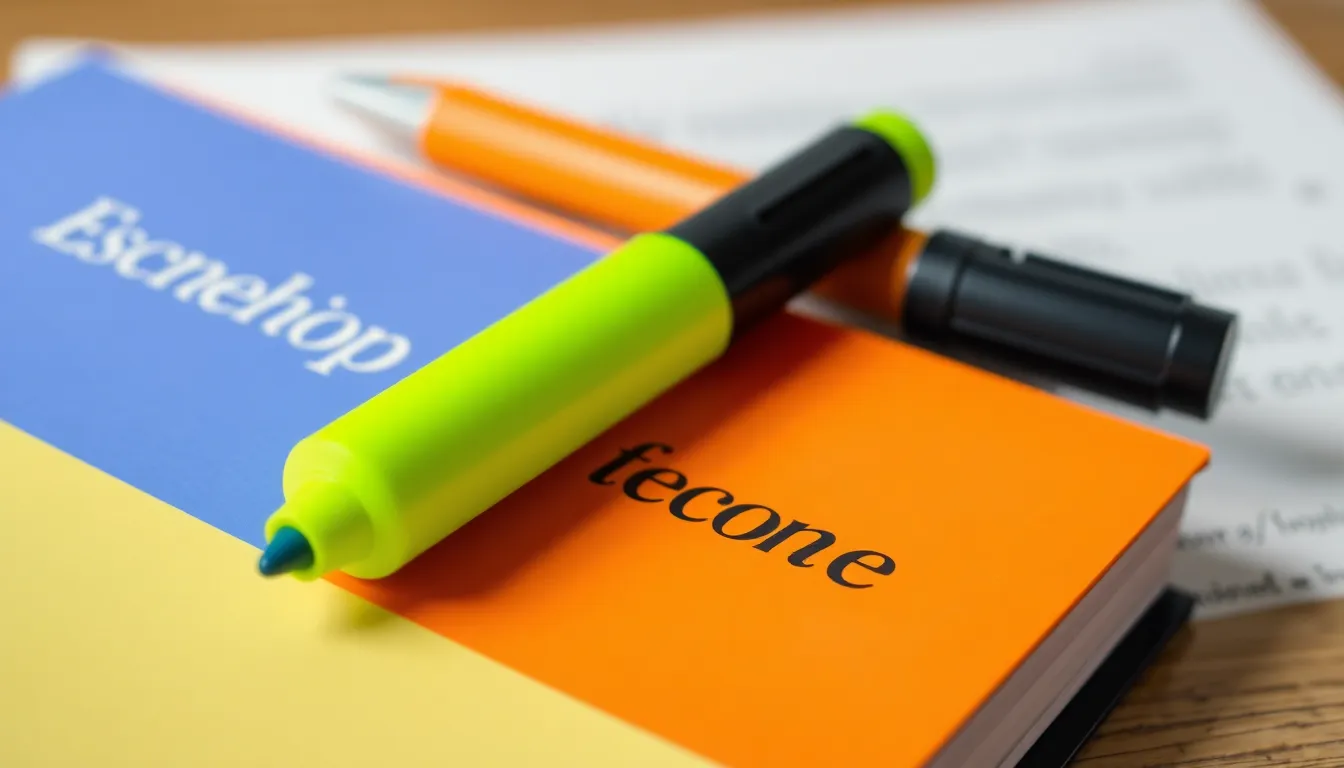For anyone diving into the world of Spanish language, mastering everyday vocabulary is essential. One common item found in classrooms and offices alike is the highlighter. Whether it’s for studying, note-taking, or organizing important information, knowing how to say “highlighter” in Spanish can enhance communication and understanding.
In Spanish, the word for highlighter is “marcador.” This term not only helps in conversations but also opens doors to discussing various stationery items and their uses in different contexts. Understanding this simple yet crucial vocabulary can make a significant difference in language learning and everyday interactions.
Table of Contents
ToggleUnderstanding The Term Highlighter
The term “highlighter” refers to a writing tool used for emphasizing text. In Spanish, the word for highlighter is “marcador,” which directly translates to “marker” in English. Understanding this translation aids in discussing stationery items effectively in Spanish-speaking environments.
Highlighters serve various purposes, from studying to organizing notes. In educational contexts, students frequently use highlighters to emphasize important information, improving retention and comprehension. Knowing how to reference these tools as “marcadores” in Spanish fosters smoother interactions in classrooms or offices where bilingual communication occurs.
Various colors of highlighters exist, including yellow, pink, green, and blue. Students and professionals often favor the yellow highlighter due to its visibility and minimal distraction on paper. Familiarity with these terms enhances vocabulary and increases the ability to engage in discussions involving stationery.
Additionally, other related stationery terms include “lápiz” for pencil and “pluma” for pen. Expanding vocabulary in this context empowers individuals, allowing them to describe their needs or preferences more accurately when shopping for or using stationery products.
How Do You Say Highlighter In Spanish?

The Spanish word for “highlighter” is “marcador.” Understanding this term is crucial for effective communication about stationery in Spanish-speaking environments.
Common Translations
In addition to “marcador,” some people use “marcador de texto,” which translates to “text marker.” This term provides clarity and specifies the tool’s function. Both terms are widely understood in educational and office contexts.
Regional Variations
Regional differences exist in the terms used for highlighters. In some areas, “subrayador” might be preferred, especially in Latin America. This variation emphasizes the function of underlining or highlighting text. Overall, while “marcador” is the most commonly accepted term, understanding these nuances enables better communication across Spanish-speaking regions.
Usage In Context
Understanding how to use “marcador” in different contexts enhances communication. The term applies across various scenarios, especially in educational and artistic settings.
In Educational Settings
In educational environments, “marcador” plays a crucial role. Students frequently use highlighters to emphasize important information in textbooks and notes. For instance, a student might highlight key concepts during study sessions using a yellow “marcador.” Teachers often encourage the use of highlighters to improve comprehension and retention of material, making “marcador” a valuable tool in learning aids. Familiarity with this term supports smoother interactions between educators and students when discussing study techniques.
In Artistic Contexts
In artistic settings, “marcador” serves a different purpose. Artists often use highlighters to create vibrant illustrations or to emphasize specific areas in their artwork. It’s common to see bold colors like pink or green in mixed media projects, allowing artists to add a pop of color that draws attention. Furthermore, whether in a sketchbook or on a canvas, highlighters can provide depth and contrast, showcasing the versatility of the “marcador” beyond its traditional educational applications. Understanding this usage helps artists communicate their techniques and preferences effectively.
Tips For Remembering The Translation
Remembering the translation of “highlighter” as “marcador” can enhance language retention.
- Association Techniques: Associate “marcador” with the word “marker.” Both terms relate to a writing tool, helping establish a mental connection.
- Visual Cues: Look at a highlighter and visualize the word “marcador” when using it. This visual association reinforces memory cues during language practice.
- Repetition: Use “marcador” in sentences multiple times. For example, “I need a marcador” or “Pass me the marcador.” Repetition solidifies understanding.
- Contextual Usage: Incorporate the term in various contexts. For instance, in a classroom setting: “El profesor recomienda usar un marcador para destacar información.”
- Mnemonic Devices: Create a mnemonic with the word “marcador.” Using phrases like “my art requires colorful attention, doing on readings,” can help recall the term.
Utilizing these strategies fosters confidence in using “marcador” during conversations or writings.
Conclusion
Mastering the term “marcador” is essential for anyone looking to enhance their Spanish vocabulary. This single word opens doors to effective communication in educational and artistic settings. By understanding its usage and regional variations, learners can navigate conversations with ease.
Incorporating “marcador” into daily interactions not only builds confidence but also enriches the overall language-learning experience. The strategies outlined for remembering the term can make it easier to use in context. As learners continue to expand their vocabulary, they’ll find that even small words like “marcador” can significantly impact their fluency and engagement in Spanish-speaking environments.





